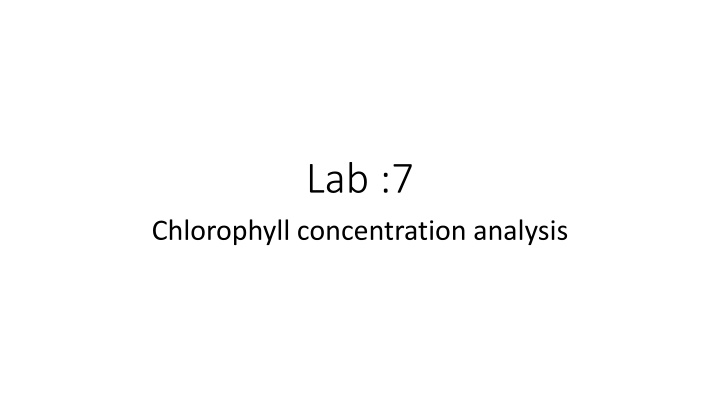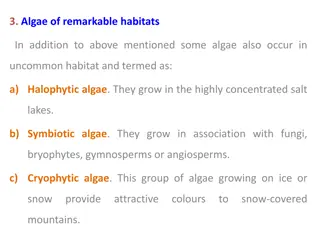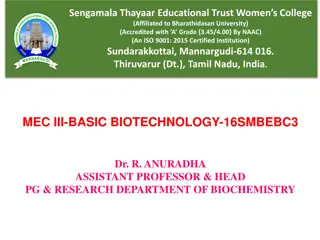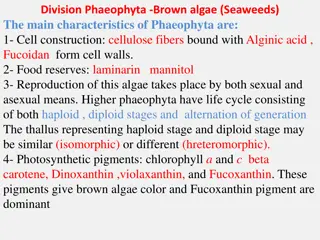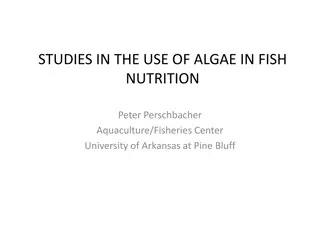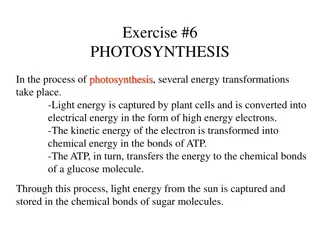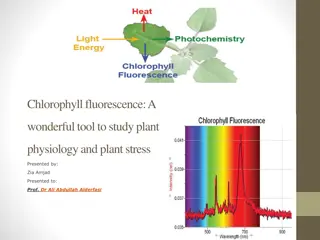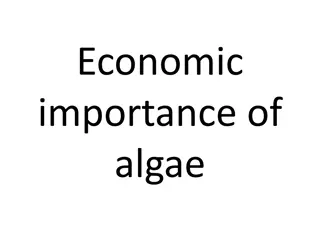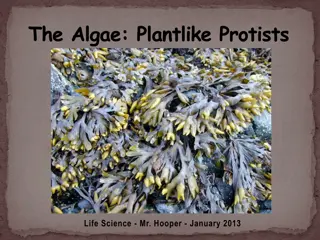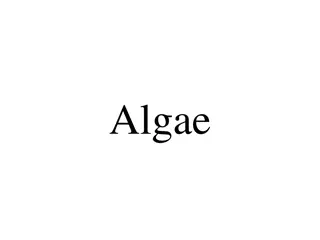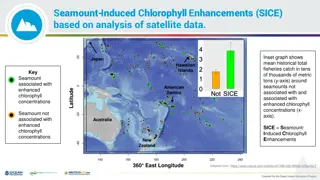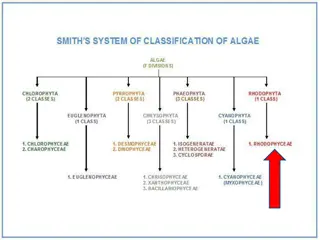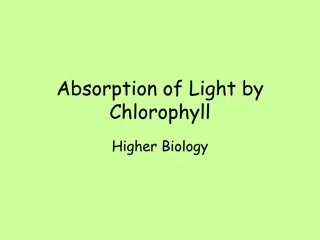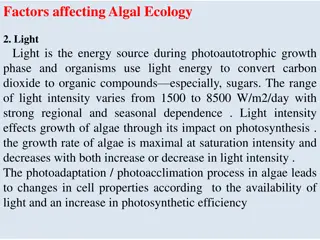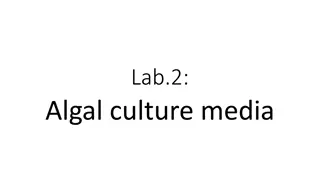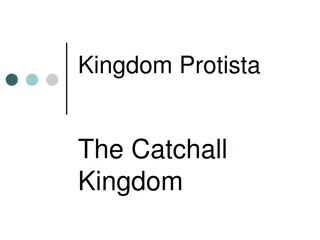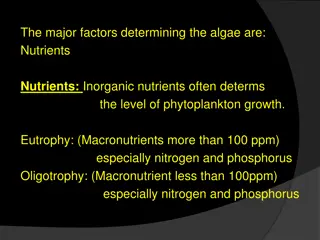Chlorophyll and Algae
Chlorophyll is a crucial photosynthetic pigment found in plants and algae, enabling them to convert sunlight into organic compounds. Explore the importance of chlorophyll measurements, its concentration analysis procedures, and the role of other photosynthetic pigments in algae. Learn about chlorophyll-a as an indicator of algal biomass and how it can help determine the physiological state of algae. Discover the different chlorophyll molecules and their absorbance of visible light wavelengths to understand their variations in concentration within cells.
Download Presentation

Please find below an Image/Link to download the presentation.
The content on the website is provided AS IS for your information and personal use only. It may not be sold, licensed, or shared on other websites without obtaining consent from the author.If you encounter any issues during the download, it is possible that the publisher has removed the file from their server.
You are allowed to download the files provided on this website for personal or commercial use, subject to the condition that they are used lawfully. All files are the property of their respective owners.
The content on the website is provided AS IS for your information and personal use only. It may not be sold, licensed, or shared on other websites without obtaining consent from the author.
E N D
Presentation Transcript
Lab :7 Chlorophyll concentration analysis
Introduction: Chlorophylls are the essential photosynthetic pigments present in all green plants and algae, and allow them to convert sunlight into organic compounds in the process of photosynthesis. Chlorophyll makes plant& algae appears green because it reflects green color while absorbing all other colors.
Chlorophyll itself is actually not a single molecule but a family of related molecules, designated chlorophyll a, b, c, d, e and f. these pigments are relatively absorb slightly different wave length of visible light. The relative concentrations and dominancy within the cell of these chlorophylls varies with the species of algae, but chlorophyll a is dominant in all the eukaryotic algae and the prokaryotic blue-green algae (Cyanobacteria) and therefore its concentration is what is reported during chlorophyll analysis.
Other photosynthetic pigment found in algae as carotenoid (as - carotene and phycobilin as phycocyanin & phycoerytherene) These accessory pigments are given color for algae and improve light energy absorption
Importance of chlorophyll measurements Chlorophyll concentration is a measure of the abundance of algae or phytoplankton and help in algal taxonomic confusion. Chlorophyll a, constitutes approximately 1% to 2% (dry weight) of planktonic algal biomass. This feature makes chlorophyll-a a convenient indicator of algal biomass. The concentration of chlorophyll-a can be used to assess the physiological state of algae by examining its degradation products, phaeophytin and phaeophorbide.
Any chlorophyll analysis procedure is consisting of three main steps: 1-isolating the cells: The most typical way to separate algal cells from water is to filter the water sample to concentrate all the particles onto a filter. The filters are then soaked in a solvent that will extract the pigments from the cells, 2-extracting the chlorophyll: Pigment extraction was carried out through algal cells maceration in suitable organic solvent. The solvent most commonly used for this is 90% acetone, which has been shown to give the most efficient extraction without pigment alteration There are three commonly used methods of pigment extraction: sonication, grinding, and freezing. The idea is to rupture the chloroplasts so that the pigments can elute into the acetone without degradation
